Peacock, NBCUniversal's new streaming service, launched this week with a robust library of content and an alluring free price point. However, how does the service compare to its peers and what does its entry into the streaming space mean for the industry? After downloading the Peacock App, I thought it'd be great to share some observations about its functionality and how it will impact the industry.
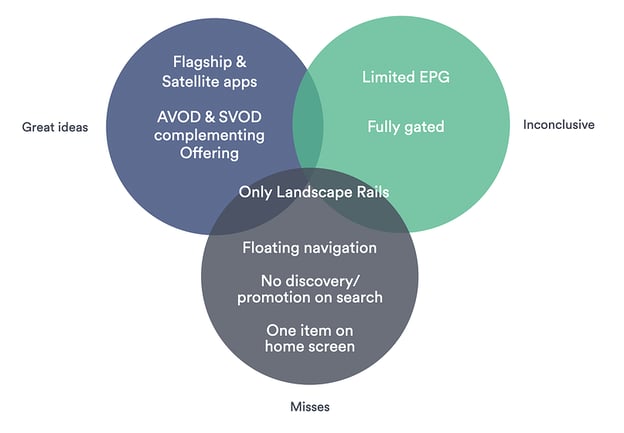
Flagship and satellite – Peacock serves as a consolidated master app for all properties, verticals, and networks, focusing on long-form video assets, and simultaneously keeping over 15 other brand properties that have vertical audiences. (Managing a large portfolio of similar, though not identical, apps is an interesting and complex topic in itself that I’ve dealt with a lot.)

Ads and subscription – It has been long assumed that Peacock will signal the return to AVOD (ad based) models after several years of focus on SVOD (subscription based). Indeed, research suggests that users would be more willing to pay for functionality than content (e.g., remove ads, live channels, downloads, etc.). In that sense, Peacock’s hybrid model is spot on. However, it’s important not to become illusioned that display and video ads can easily drive profits. Most companies do not have adequate scale. In such cases, sponsorships and branded content offerings can help fund the free-tier.
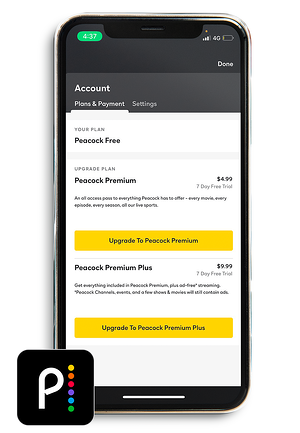
Fully gated – That said, it was surprising to see that Peacock decided to fully gate the experience, requiring sign-up (like Disney+ and Netflix) before even browsing the catalog. On the one hand, this helps quickly build a user data-base, and the media hype surely helped driving traffic; on the other hand, gating the catalog itself is aggressive and can result in lower conversion. Best practices suggest catalogs should be ungated; subsequently playing the video itself should trigger the gate.
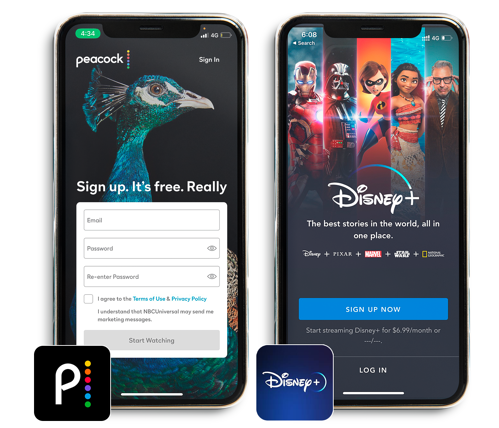
Floating navigation and buttons – We built a component like this for our platform a while back to help customers really stand out. Overall we found that users appreciate the innovation at first glance, but that it is short lived and they ultimately resent the fact it covers the content and offers no utility over the tabs they are used to.

Content screen based on rails – The content screens are exactly what you would expect: rails in different sizes, with varying amounts of text (i.e., no text, one line, two line, more lines) and round corners. Leading platforms today are split down the middle – some keep all content thumbnails in landscape aspect ratio (including feature films), while others, like Netflix, focus on portrait aspect ratios. On an iPhone 11, Netflix can fit 9 full posters on a single screen, while Peacock can only fit 4 full posters and 4 half-posters.
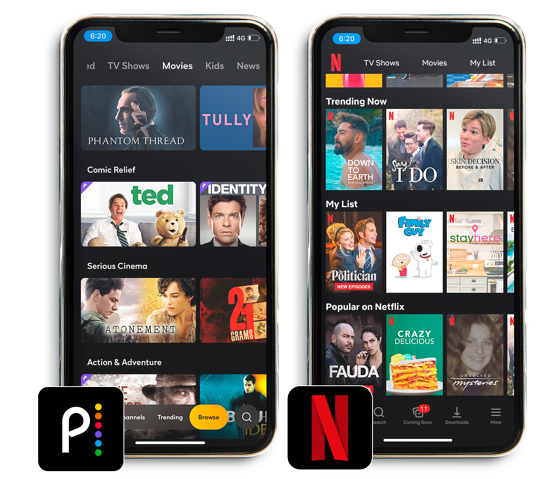
Limited EPG – Unlike its satellite apps that offer full program guides, and other live services like Pluto TV or Hulu Live, Peacock focuses on an immediate consumption experience, and only exposes the current live program and the one coming up next. It’s an interesting UX approach and there is merit to it – we want users to come in and consume content. It will be interesting to see if users will expect and ask for a TV guide experience and how NBC will decide to address it. It’s clearly a minded decision for us to follow and study, and not a technical limitation or oversight.
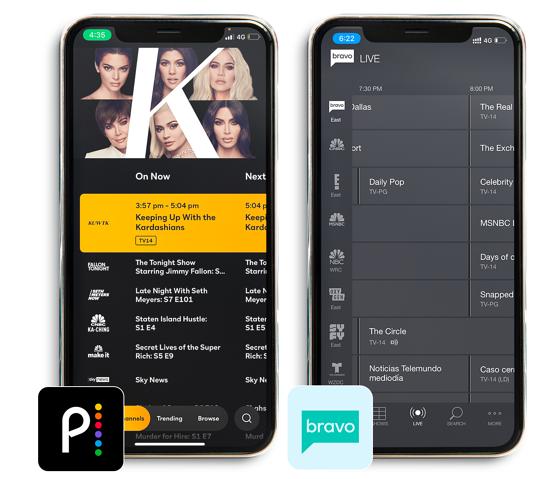
Underutilized search – This one is easy to fix. When tapping the search icon the user is presented with an empty screen and search bar. The best practice would be to suggest content to the user at that point, e.g., popular searches, recommended for you, editorially promoted.

Homepage / Trending page – This is the most peculiar decision in this app. Instagram/Snapchat stories and TikTok definitely make a case for swiping through a single item of content. My guess is that the conversion will be very low, and that in comparison to a content page combining editorial and personalized recommendations, it will severely underperform. Other services have shown great ways to combine “stories” for promotion as a bar or component within a more robust homepage. I believe this will be altered after they give it a run.

Overall, Peacock’s emergence is yet another sign that our industry is graduating into an era of digitally-led media businesses. Everything needs to be rethought and everything matters.
In our day-to-day work at Applicaster we are very aware that most companies have relatively limited resources to compete for audiences. Consider that Netflix has approx. 150 engineering openings alone at any given time.
In-screen components that build products that look and behave like Peacock are readily available on our app management platform Zapp for product or engineering teams to take advantage of. This has been my personal passion for the past decade, and releases like this make it exciting for our entire team because we get to deconstruct it into components in this way.
Irrespective of whether you are in the process of building or rebuilding your direct-to-consumer properties, I am always interested in learning through conversation with colleagues about components of success in the space. Please do reach out.


